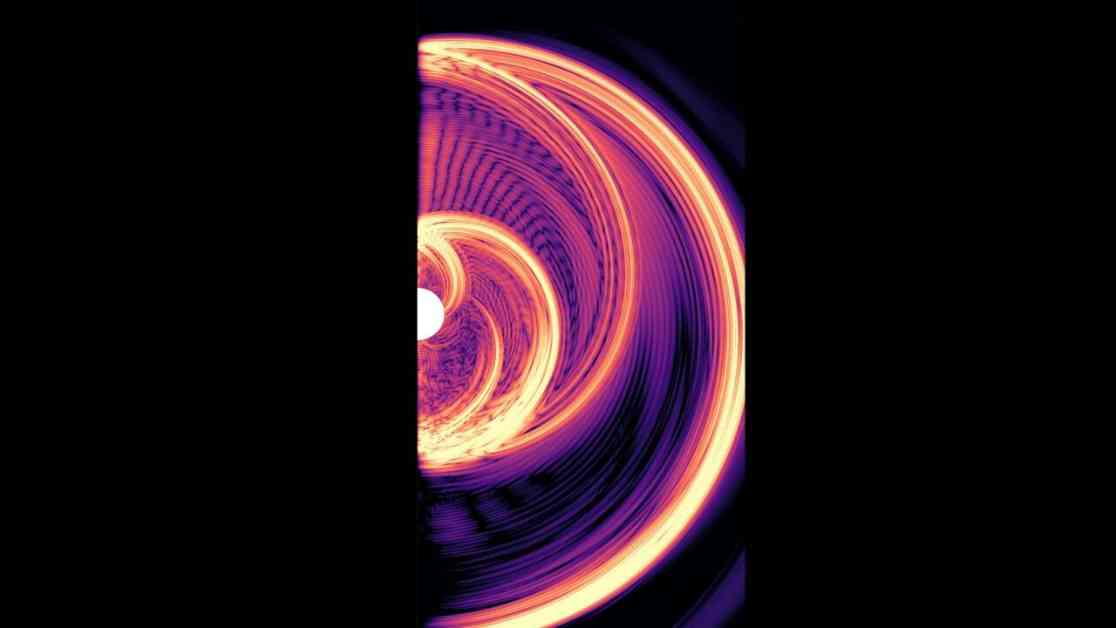Understanding the Nonlinear Behavior of Black Hole Mimickers
In recent groundbreaking research, a scientist from Princeton University has delved into the complexities of black hole mimickers, shedding light on their nonlinear behavior and the gravitational wave signals they emit. This study marks a significant step forward in our understanding of these enigmatic objects and could potentially revolutionize how we identify black holes in the universe.
What are Black Hole Mimickers?
Black hole mimickers are hypothetical astronomical entities that closely resemble black holes in terms of their gravitational wave signals and their influence on surrounding matter. However, the key distinction lies in the absence of an event horizon, the point of no return that characterizes true black holes.
Dr. Nils Siemonsen, an Associate Research Scholar at Princeton University, explains the significance of distinguishing between black holes and their mimickers through gravitational wave observations. He emphasizes the importance of accurately differentiating these objects to advance our knowledge of the universe.
The Study of Boson Stars as Mimickers
The focus of the research published in Physical Review Letters centers on a specific type of black hole mimicker known as boson stars. These stars are composed of scalar bosons, such as axions, which lack spin and form a stable gravitational configuration without strong interactions.
Previous studies have indicated that the merger of binary boson star systems generates gravitational wave signals akin to those produced by black hole ringdowns. Dr. Siemonsen’s research aims to refine these findings by incorporating nonlinear gravitational effects and self-interactions within the matter of the mimicker.
Nonlinear and Self-Consistent Treatment of Black Hole Mimickers
To address the limitations of prior studies, Dr. Siemonsen employs numerical simulations to solve the full Einstein-Klein-Gordon equations governing the evolution of scalar fields in boson stars. By focusing on scenarios involving large mass ratios, he examines the collision and merger of binary boson star systems, revealing intricate details about their gravitational dynamics.
The combination of the Klein-Gordon equation with Einstein’s field equations allows for a comprehensive analysis of the self-consistent evolution of the mimicker during the merger process. Utilizing advanced numerical techniques, such as the Newton-Raphson relaxation method and fifth-order finite difference schemes, Dr. Siemonsen navigates the intricate challenges posed by the complex scales involved in simulating black hole mimickers.
High-Frequency Bursts and Long-Lived Components
Through detailed simulations, the study uncovers distinct components in the gravitational wave signals emitted during the ringdown phase of a black hole mimicker merger. These components exhibit unique properties not observed in regular black hole mergers, offering a potential avenue for differentiating between mimickers and true black holes.
The timing and frequency characteristics of the bursts are found to be dependent on the size of the smaller boson star involved in the merger, providing valuable insights into the behavior of these enigmatic objects. Additionally, the presence of a long-lived gravitational wave component suggests a prolonged emission of energy post-merger, setting mimickers apart from conventional black holes.
Future Implications and Research Directions
As the study highlights the substantial energy emitted in gravitational waves by black hole mimickers compared to black holes, it opens up new avenues for future research. Dr. Siemonsen emphasizes the need for further exploration into the properties and dynamics of well-motivated mimickers to enhance our understanding of these intriguing celestial bodies.
Looking ahead, future research directions may involve investigating the inspiral, merger, and ringdown dynamics of well-motivated black hole mimickers within binary systems. By leveraging perturbative techniques and nonlinear treatments, researchers can refine their understanding of mimickers and pave the way for enhanced gravitational wave observations to test the black hole paradigm.
In conclusion, Dr. Siemonsen’s pioneering work on black hole mimickers offers a fresh perspective on these elusive entities and their gravitational wave signatures. By unraveling the nonlinear behavior of mimickers and identifying key distinguishing features, this research lays the groundwork for future advancements in our exploration of the cosmos.






















